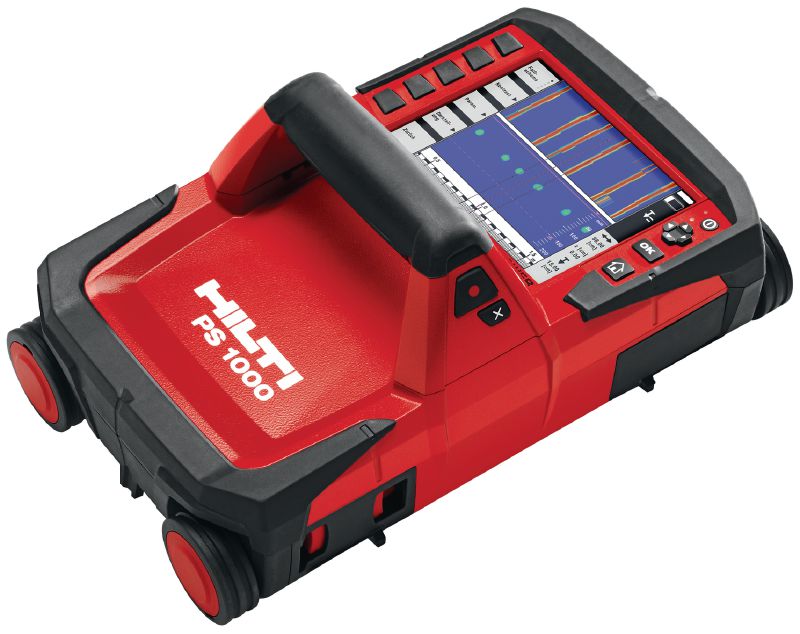Regional RainierGPR Service Areas for Precision Concrete Scanning
Regional RainierGPR Service Areas for Precision Concrete Scanning
Blog Article
Concrete Scanning: An Important Step In The Direction Of Making Certain Architectural Stability and Safety
In the world of building and construction and framework maintenance, the importance of concrete scanning can not be overemphasized. This careful process holds the essential to revealing potential threats concealed below the surface area of seemingly strong structures. By utilizing sophisticated technology and techniques, concrete scanning acts as a critical device in making sure that the integrity and safety and security of buildings and bridges are maintained to the highest criteria. However, past its surface-level implications, the duty of concrete scanning extends much deeper than fulfills the eye.
Importance of Concrete Scanning
Concrete scanning plays a crucial function in making certain the structural integrity and security of buildings and framework tasks. By making use of innovative modern technologies such as ground-penetrating radar (GPR) and electro-magnetic induction, experts can non-destructively inspect concrete structures to spot potential problems, spaces, ingrained things, and support layout. This process allows very early discovery of abnormalities that could jeopardize the stability of a framework, protecting against expensive damages and ensuring the security of passengers.
Before drilling, reducing, or coring right into concrete, scanning helps identify the specific areas of rebar, post-tension cords, and other embedded elements, reducing the risk of unintentional hits that might lead to structural weak points. In addition, concrete scanning help in high quality control by verifying the density of concrete covers and discovering any discrepancies that might impact the overall sturdiness of the structure.
Innovation for Concrete Evaluation

Benefits of Early Detection
Prompt discovery of architectural issues can significantly alleviate threats and guarantee the longevity of building jobs. By determining prospective issues early in the building process, stakeholders can take positive steps to deal with issues prior to they rise right into bigger and a lot more pricey issues. One of the key benefits of very early discovery is the prevention of structural failures, which can pose serious safety and security hazards and bring about task delays and monetary losses.
Furthermore, very early detection enables for timely repair work and maintenance, which can assist prolong the life expectancy of the framework. By addressing issues quickly, building teams can prevent pricey repair work and even the need for premature replacement of architectural elements. This aggressive method not only saves money and time yet additionally enhances the total safety and longevity of the building job.
Furthermore, very early detection can improve task planning and decision-making by offering stakeholders with valuable understandings into the problem of the structure. Armed with this details, job supervisors can make informed selections concerning building timelines, approaches, and materials, causing more effective and effective task outcomes.
Making Sure Architectural Stability
Making sure the architectural stability of a building task is critical to its safety and long life. Architectural stability refers to the capability of a structure or facilities to keep its type and function under various tons and environmental problems. To achieve this, complete analysis and surveillance of the sites framework are essential. Concrete scanning plays a crucial role in guaranteeing architectural security by identifying potential issues such as spaces, delamination, or support deterioration that could compromise the integrity of the structure in time.
By utilizing advanced scanning technologies like ground-penetrating radar (GPR) and electromagnetic induction, building and construction specialists can non-invasively inspect concrete frameworks to determine areas of concern under the surface area. This positive approach enables the very early discovery of weak points or defects, enabling punctual repair services or reinforcement to stop structural failings.
Normal concrete scanning during different construction stages and throughout the life process of a structure can assist preserve its stability, mitigate threats, and guarantee the security of occupants. By prioritizing structural stability with concrete scanning, building and construction projects can improve their strength and resilience, eventually contributing to greater safety and long life.
Preventing Crucial Failings
Applying regular evaluations, such as concrete scanning, can expose concealed flaws like gaps, splits, or deterioration that could compromise the integrity of a structure. By utilizing sophisticated scanning innovations like Ground Passing through Radar (GPR) or Concrete X-ray, designers can non-destructively analyze the problem of concrete and identify weak points that require support or repair service.

Final Thought
In final thought, concrete scanning plays a critical function in guaranteeing structural stability and security by making use of advanced innovation for very early discovery of prospective concerns. This proactive strategy assists avoid vital use this link failings and guarantees the security of structures. It is vital to prioritize concrete examination as a common technique to protect the durability and safety and security of structures and facilities.
Concrete scanning plays an essential function in making sure the structural stability and safety and security of structures and infrastructure projects. Furthermore, concrete scanning aids in high quality control by validating the density of concrete covers and identifying any type of inconsistencies that may influence the total sturdiness of the structure. Concrete scanning plays an essential role in read the article ensuring structural stability by spotting possible problems such as gaps, delamination, or support corrosion that can endanger the stability of the structure over time.

In final thought, concrete scanning plays a crucial function in guaranteeing architectural stability and security by utilizing advanced modern technology for very early discovery of prospective problems.
Report this page